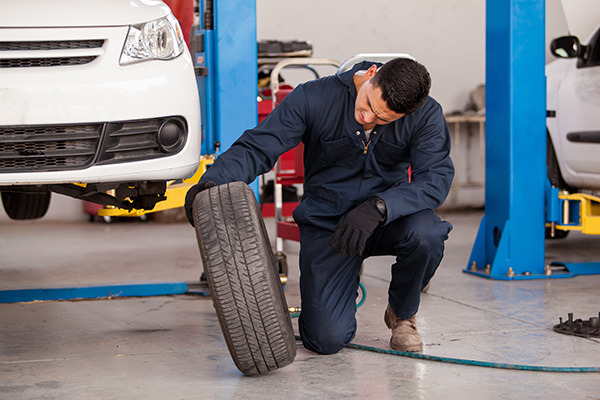
Tires are the only contact point between your vehicle and the road, making their maintenance required for safety and performance. From routine inspections to essential services, understanding the basics of tire maintenance is necessary for every vehicle owner.
1. Tire Inspection
Regular tire inspections help to identify potential issues early on. Inspect tires for signs of wear, damage, or uneven tread wear, which could indicate alignment or suspension problems. Check tire pressure regularly using a gauge to ensure it matches the manufacturer's recommended PSI.
2. Tire Rotation
Tire rotation involves moving tires from one position to another on your vehicle to ensure even tread wear. This helps extend the life of your tires and ensures optimal performance and handling. Generally, tires should be rotated every 6,000 to 8,000 miles, or as recommended by the tire manufacturer.
3. Wheel Alignment
Wheel alignment ensures that your tires are angled correctly, promoting even tread wear and optimal vehicle handling. Misaligned wheels can cause uneven tire wear, poor handling, and decreased fuel efficiency. Regular alignment checks and adjustments can help prevent premature tire wear and ensure a smoother, safer ride.
4. Tire Balancing
Tire balancing involves redistributing the weight of the tire and wheel assembly to ensure proper balance. Imbalanced tires can cause vibration, uneven tire wear, and steering issues. During tire balancing, weights are added or removed to ensure each tire rotates evenly, resulting in a smoother, quieter ride.
5. Tire Replacement
Despite regular maintenance, tires will eventually wear out and need replacing. Signs that it's time for new tires include low tread depth, visible damage such as cracks or bulges, and frequent flats or blowouts. Consult with a professional tire technician to determine the best replacement tires for your vehicle and driving needs.
6. Tire Repair
Tire repair involves patching and plugging procedures to fix punctures and minor damage. Patching entails removing the tire, locating the puncture, and applying a patch from the inside. Plugging involves inserting a rubber plug into the puncture from the outside. Both methods are effective in restoring tire integrity and safety.
FAQ
How often should I check my tire pressure?
Tire pressure should be checked at least once a month or before long trips.
What are the benefits of tire rotation?
Tire rotation promotes even tread wear, extends tire life, and improves vehicle handling and performance.
Can I drive with a punctured tire?
Driving with a punctured tire is not recommended as it can lead to further damage and safety hazards. Instead, have it repaired or replaced.
Ready to hit the road with confidence? Trust Jeff's Automotive, Inc. for all your tire service needs. Contact us today to book your appointment and ensure your tires are in top-notch condition.